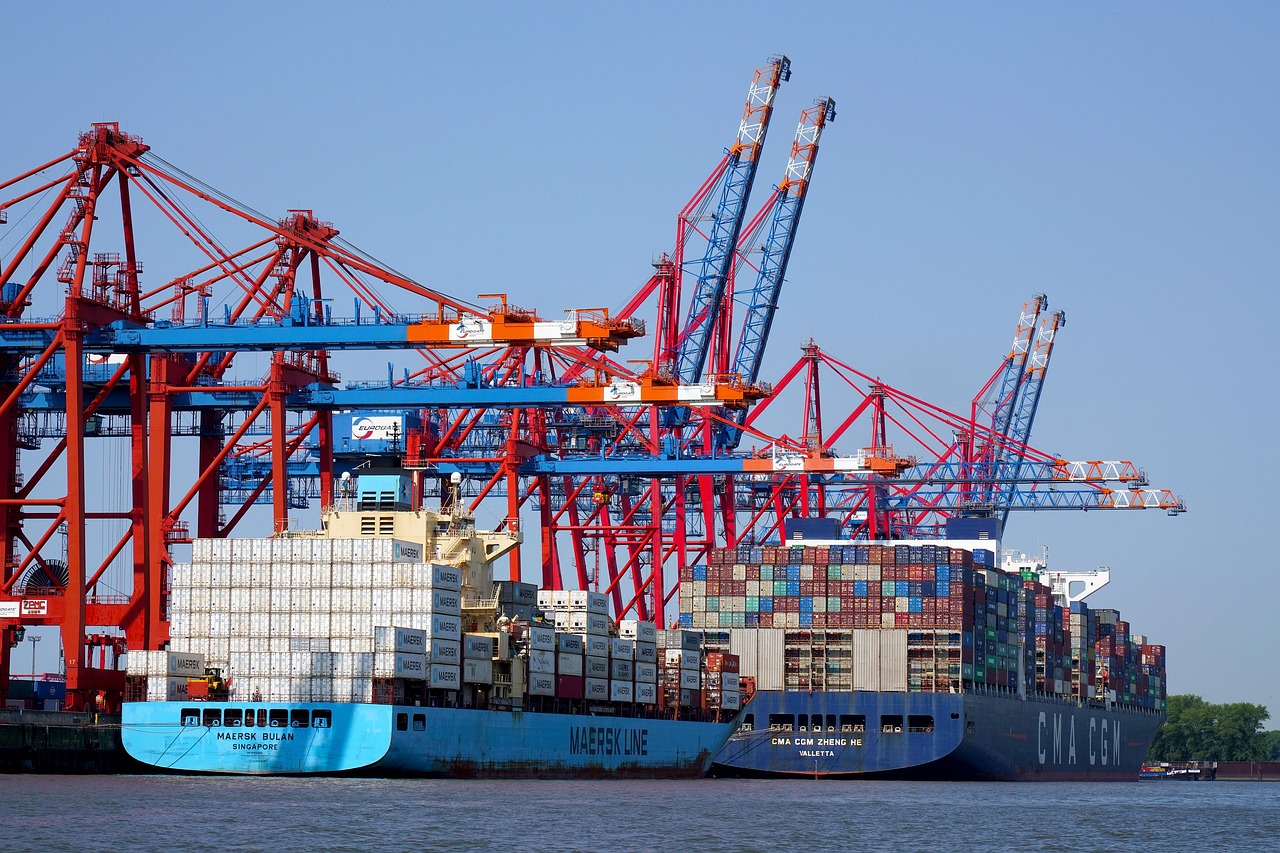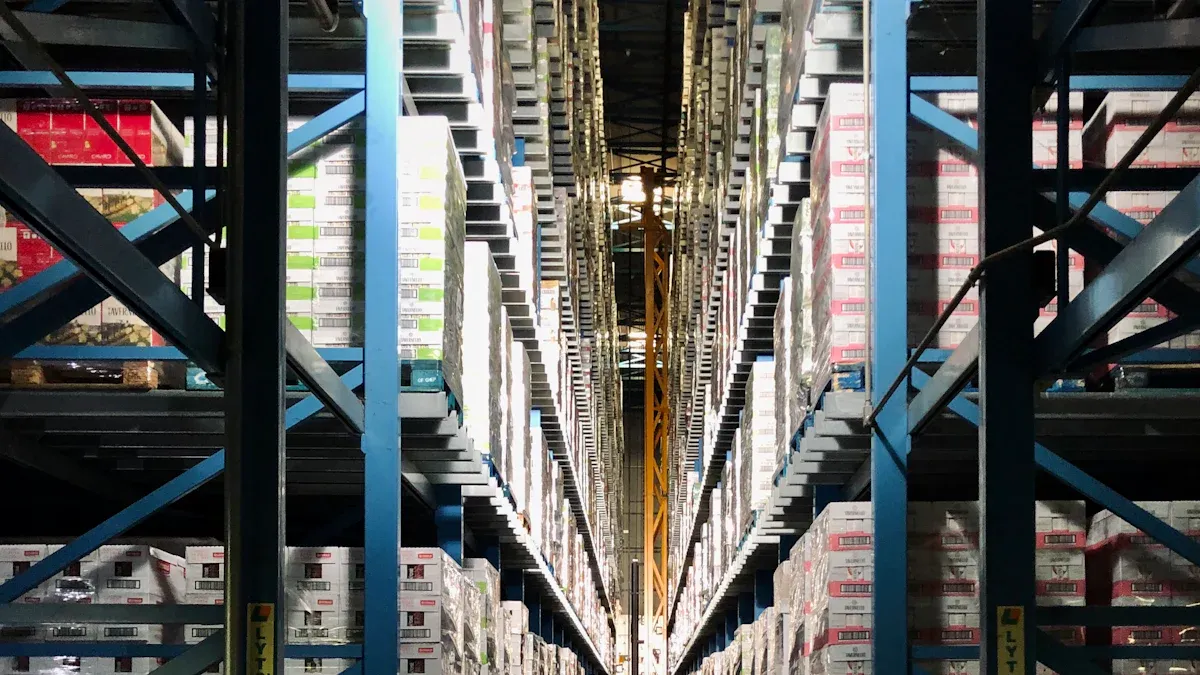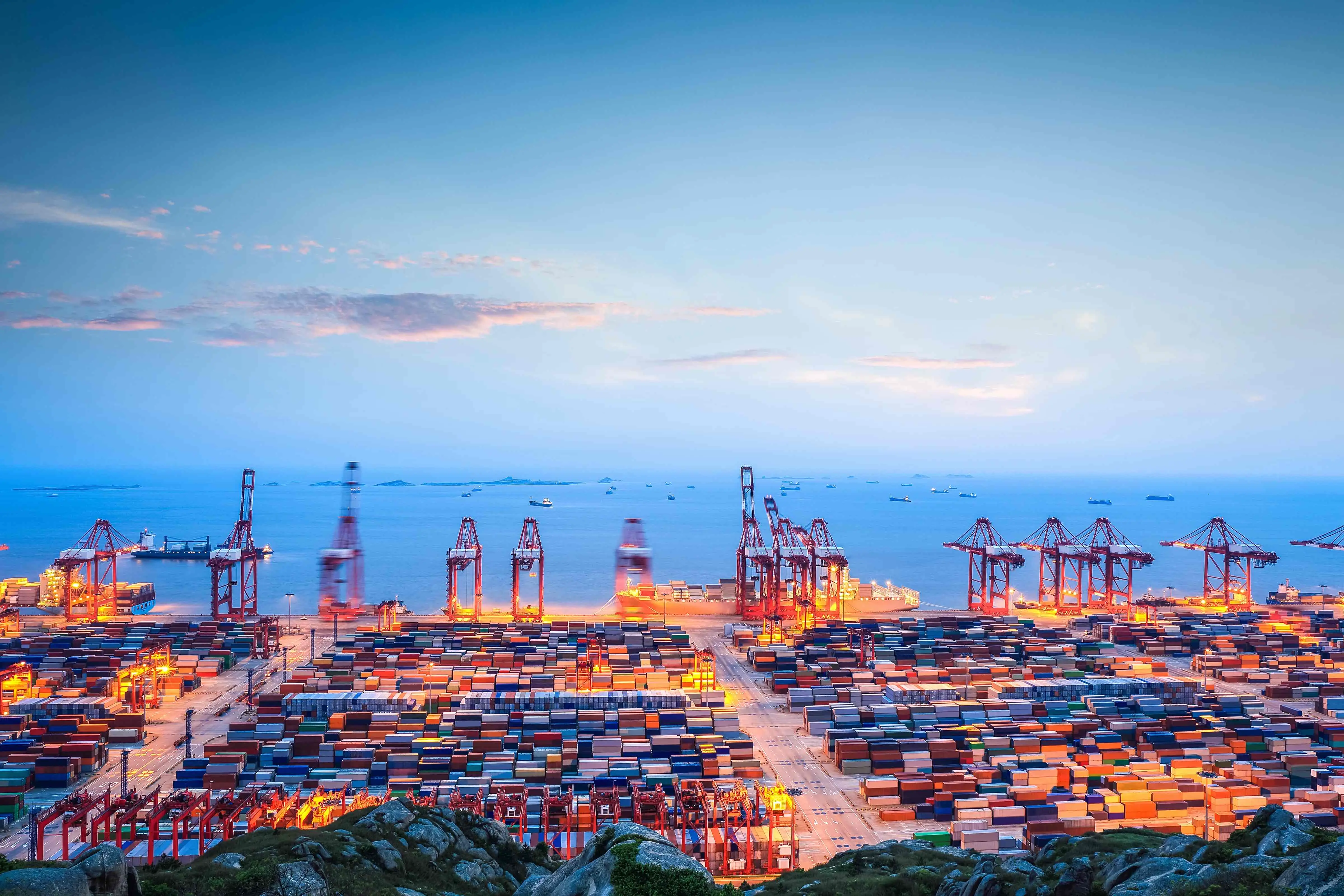The Evolving Landscape of Japan’s Supply Chains: What Lies Ahead

Supply chains in Japan are transforming rapidly, driven by technological advancements and shifting consumer demands. You can see this evolution in the numbers: Japan’s e-commerce revenues are projected to grow from $8.6 billion in 2019 to $10.4 billion by 2023. Collaborative innovations, like Yamato Transport’s partnerships with supermarkets, highlight the importance of data-sharing to reduce waste. With over 4,500 cross-industry collaborations and 1,200 factories adopting voice-assisted tools, Japan is embracing strategies to enhance efficiency. These efforts pave the way for a resilient future of supply chains, ensuring adaptability in a dynamic global market.
Current Trends and Challenges in Japan's Supply Chains

Geopolitical Shifts and Global Trade Dynamics
Impact of U.S.-China trade tensions on Japan's supply chains
Geopolitical events like the U.S.-China trade war have created uncertainty for businesses. Japan’s manufacturers rely heavily on imports from China and Taiwan, especially for semiconductors and electronic products. This dependency increases the risk of supply disruptions. A potential conflict over Taiwan could severely impact these critical supply lines. Businesses in Japan are now focusing on building resilience to mitigate future risks.
Regional Comprehensive Economic Partnership (RCEP) and its implications
The RCEP agreement offers opportunities for Japan to strengthen its supply chain networks. By reducing tariffs and simplifying trade regulations, the partnership encourages collaboration with ASEAN countries. This helps diversify supply sources and reduces reliance on single regions. However, Japan’s geographic location and vulnerability to natural disasters still pose challenges for logistics efficiency.
The Rise of E-Commerce and Consumer Expectations
Increased demand for faster and more efficient logistics
E-commerce in Japan has grown significantly, with revenues projected to reach $10.4 billion by 2023. Consumers now expect faster delivery times. Over 700 online retail platforms have adopted same-day delivery options to meet these demands. This shift has increased the pressure on logistics networks to operate efficiently.
Challenges in last-mile delivery and urban logistics
Urban areas face unique challenges in last-mile delivery. Limited warehousing facilities and high operational costs complicate logistics. Companies are exploring solutions like automated vehicles and drones to address these issues. These innovations aim to improve delivery times while reducing costs.
Opportunities for Growth in Japan's Supply Chains
Strategic Advantages in Advanced Manufacturing
Strengths in robotics, automotive, and electronics industries
Japan holds a leading position in advanced manufacturing, particularly in robotics, automotive, and electronics. These industries benefit from cutting-edge technologies that reduce production costs and improve efficiency. For example, robotics and automation optimize workflows, while AI-driven quality control ensures consistent product standards. Advanced manufacturing can boost productivity by up to 50% and reduce material waste by as much as 90%. This focus on innovation allows you to achieve faster time-to-market and enhanced cost efficiency, making Japan a global leader in manufacturing excellence.
Contribution Type | Evidence |
|---|---|
Reduced Production Costs | Robotics and automation streamline workflows, lowering costs. |
Increased Productivity | Advanced manufacturing increases productivity by 30% to 50%. |
Reduced Material Waste | Additive manufacturing minimizes waste by up to 90%. |
Opportunities in reshoring and nearshoring production
Reshoring and nearshoring present significant opportunities for Japan. By bringing production closer to home, you can reduce dependency on foreign suppliers and mitigate risks from global disruptions. This strategy also aligns with Japan's focus on supply chain resilience. Nearshoring to Southeast Asia, supported by trade agreements like RCEP, further strengthens regional ties and ensures a steady flow of goods.
Government Initiatives and Policy Support
Investments in semiconductor production and critical technologies
The Japanese government actively invests in semiconductor production and other critical technologies to secure its supply chains. Initiatives include persuading global leaders like TSMC and Samsung Electronics to establish R&D centers in Japan. The Leading-edge Semiconductor Technology Center focuses on developing next-generation semiconductors, ensuring Japan remains competitive in high-tech industries. These efforts reflect a broader strategy to enhance supply chain resilience and foster innovation.
CHIPS and Science Act: $52.7 billion for domestic chip production.
Intel Corporation: $20 billion investment in fabrication plants.
Private fixed investment in manufacturing: $799.2 billion in 2023.
Support for green and sustainable supply chains
Sustainability is a priority for Japan's supply chain strategy. The government promotes green initiatives, such as low-carbon materials and clean technology manufacturing. These efforts align with global trends and position Japan as a leader in sustainable supply chain practices. By adopting these measures, you contribute to environmental protection while enhancing operational efficiency.
Collaboration with Regional and Global Partners
Strengthening ties with ASEAN countries
Japan's collaboration with ASEAN countries strengthens regional supply chains. These partnerships diversify supply sources and reduce reliance on single regions. Joint research and development initiatives with Taiwan and South Korea further enhance technological capabilities. By working together, you can address economic and national security challenges while fostering innovation.
Leveraging free trade agreements for supply chain optimization
Free trade agreements, such as RCEP, simplify trade regulations and reduce tariffs. These agreements create opportunities for you to optimize supply chains by improving logistics efficiency and reducing costs. Japan's balanced approach to economic ties ensures stability and resilience in global trade networks.
Tip: Collaborating with regional partners and leveraging trade agreements can help you build a more robust and sustainable supply chain.
The Role of Technology in the Future of Supply Chains

Blockchain for Transparency and Traceability
Enhancing trust and efficiency in supply chain operations
Blockchain technology is transforming logistics by enhancing transparency and trust. It creates a secure, immutable ledger that records every transaction in the digital supply chain. This ensures that all stakeholders, from suppliers to customers, can access accurate and verified information. By reducing manual errors and improving data accuracy, blockchain streamlines operations and boosts efficiency. For example, companies can use blockchain to verify the origin of raw materials, ensuring compliance with ethical sourcing standards.
Use cases in food safety and pharmaceutical industries
Blockchain has proven invaluable in industries like food safety and pharmaceuticals. It enables real-time tracking of products, ensuring quality and authenticity. For instance, pharmaceutical companies use blockchain to prevent counterfeit drugs from entering the supply chain. Similarly, food producers can trace contaminated items back to their source, minimizing health risks. Deloitte's studies highlight how blockchain improves traceability and compliance, making it a critical tool for modern logistics.
Internet of Things (IoT) and Smart Logistics
Real-time tracking and monitoring of goods
IoT technology revolutionizes logistics by providing real-time visibility into the movement of goods. Sensors track product location, condition, and estimated delivery times. This level of transparency helps you manage just-in-time inventory, reducing overstocking or stockouts. Improved tracking also enhances customer satisfaction by ensuring timely deliveries.
Predictive maintenance and inventory management
IoT enables predictive maintenance by monitoring equipment performance. This reduces downtime and extends the lifespan of machinery. Smart inventory systems powered by IoT automatically reorder products when stock levels drop. These systems optimize storage and minimize waste, making your digital supply chain more efficient.
Technology | Impact on Supply Chain |
|---|---|
Internet of Things | Enhances real-time visibility and tracking of goods, improving efficiency in logistics. |
Blockchain | Improves inventory financing and traceability in complex supply chains. |
Automation | Streamlines operations and reduces manual labor in supply chain processes. |
Robotics | Increases efficiency in warehousing and logistics operations. |
Artificial Intelligence | Provides predictive analytics for better decision-making in supply chain management. |
Cloud Computing | Facilitates integration of online and offline operations, optimizing order fulfillment. |
E-commerce Growth | Drives demand for faster and more efficient logistics solutions, impacting supply chain strategies. |
Drones and Autonomous Vehicles
Revolutionizing last-mile delivery
Drones and autonomous vehicles are reshaping last-mile delivery. These technologies reduce delivery times and operational costs. Drones can navigate congested urban areas, delivering packages directly to customers. Autonomous vehicles, equipped with advanced sensors, ensure safe and efficient transportation.
Overcoming labor shortages in logistics
Labor shortages in logistics present a growing challenge. Autonomous vehicles and drones address this issue by reducing reliance on human drivers. They also operate around the clock, increasing delivery capacity. By adopting these innovations, you can enhance efficiency and meet rising consumer expectations.
Note: Japan's supply chain management market is projected to reach $4,224.15 million by 2033, driven by technologies like IoT, AI, and automation. These advancements improve customer service and reduce costs, making them essential for the future of logistics.
Artificial Intelligence and Data Analytics
Optimizing supply chain decision-making
Artificial intelligence (AI) transforms how you make decisions in supply chains. It processes large amounts of data quickly, helping you identify patterns and trends that might go unnoticed. For example, AI can analyze supplier performance, predict delays, and recommend alternative routes or suppliers. This allows you to act faster and more accurately, improving overall efficiency.
AI also reduces costs by automating repetitive tasks. In call centers, for instance, AI-powered chatbots handle customer inquiries, freeing up skilled personnel for more complex tasks. This approach not only saves money but also ensures better resource allocation.
Benefit | Description |
|---|---|
AI technologies facilitate better use of skilled personnel and streamline complex decision-making processes. | |
Cost Reduction | Automation through AI leads to lower operational costs, such as in call centers. |
Enhanced Decision-Making | AI enables faster and more accurate decisions, improving overall outcomes in various sectors. |
By integrating AI into your supply chain, you can streamline operations and make smarter decisions, ensuring your business stays competitive in Japan's dynamic market.
Forecasting demand and managing risks
AI and data analytics play a crucial role in forecasting demand. By analyzing historical sales data, seasonal trends, and market conditions, AI predicts future demand with high accuracy. This helps you avoid overstocking or running out of inventory. For example, retailers use AI to adjust stock levels before peak shopping seasons, ensuring they meet customer needs without incurring unnecessary costs.
Risk management also benefits from AI. It identifies potential disruptions, such as supplier issues or natural disasters, and suggests proactive measures. For instance, AI can monitor weather patterns and alert you to potential delays in transportation. This allows you to prepare contingency plans and minimize losses.
With AI and data analytics, you gain the tools to anticipate challenges and adapt quickly. These technologies enhance your ability to manage risks and meet customer expectations, ensuring a resilient and efficient supply chain.
JUSDA's Role in Shaping the Future of Supply Chains in Japan
JUSDA's Supply Chain Management Collaboration Platform
Leveraging AI and IoT for real-time transparency and efficiency
JUSDA’s Supply Chain Management Collaboration Platform uses advanced technologies like AI and IoT to transform logistics operations. These tools provide real-time visibility into every stage of the supply chain. You can track shipments, monitor inventory, and predict potential disruptions with precision. This level of transparency reduces delays and improves decision-making. For example, IoT sensors help you monitor the condition of goods during transit, ensuring quality and compliance. By integrating these technologies, JUSDA enhances efficiency and builds trust among stakeholders.
Enhancing collaboration among suppliers, customers, and managers
Collaboration is essential for a resilient supply chain. JUSDA’s platform connects suppliers, customers, and managers through a unified system. This integration allows you to share data seamlessly, coordinate schedules, and resolve issues quickly. The platform’s tools for demand forecasting and transport coordination ensure that all parties stay aligned. This approach not only improves operational efficiency but also strengthens relationships across the supply chain.

JUSDA Solutions
To provide you with professional solutions and quotations.
Industry-Specific Solutions by JUSDA
Tailored solutions for electronics, automotive, and FMCG industries
JUSDA offers customized solutions for industries like electronics, automotive, and FMCG. These sectors face unique challenges, such as complex logistics networks and high consumer expectations. JUSDA’s expertise in these areas helps you optimize processes and reduce costs. For instance, in the automotive industry, JUSDA streamlines parts procurement and delivery, ensuring timely production. In FMCG, the focus shifts to efficient warehousing and distribution to meet fast-changing consumer demands.
Case study: Sharp's supply chain transformation with JUSDA
Sharp’s collaboration with JUSDA showcases the impact of tailored solutions. By implementing JUSDA’s platform, Sharp reduced logistics costs by 20% and improved order delivery times by 30%. The integration of tools like vendor-managed inventory and just-in-time strategies streamlined operations. This transformation highlights how JUSDA’s solutions address industry-specific challenges effectively.
JUSDA's Commitment to Innovation and Sustainability
Integrating green practices into supply chain operations
Sustainability is a core focus for JUSDA. The company integrates green practices into logistics operations, such as using low-carbon transportation modes and optimizing routes to reduce emissions. These efforts align with global trends and help you meet environmental goals. By adopting sustainable practices, you contribute to a cleaner future while improving operational efficiency.
Supporting Japan's push for resilient and secure supply chains
Japan’s geographic vulnerability to natural disasters makes supply chain resilience a priority. JUSDA supports this goal by offering flexible solutions and comprehensive business continuity planning. The platform’s ability to adapt to disruptions ensures that your operations remain stable. With JUSDA’s support, you can build a secure and efficient supply chain that meets the demands of a dynamic market.
Did you know? Japan’s supply chain management market is projected to grow at a CAGR of 12.26%, reaching $4,224.15 million by 2033. This growth reflects the increasing importance of technology and sustainability in logistics.
The future of supply chains in Japan presents a mix of challenges and opportunities. Trends like e-commerce growth and the adoption of advanced technologies, such as IoT and robotics, are reshaping operations. However, issues like aging demographics and geopolitical risks demand strategic solutions.
Trend/Challenge | Evidence |
|---|---|
Integration of Advanced Technologies | IoT, automation, and cloud computing enhance operational efficiency and visibility. |
E-commerce Growth | Over 700 online retail platforms introduced same-day delivery options. |
Aging Workforce | Japan's demographic issues complicate supply chain agility and resilience. |
Technology and innovation will drive success. Collaborative efforts, like Yamato Transport's data-sharing initiatives, highlight the importance of partnerships. Over 4,500 cross-industry collaborations and pilot programs using drones showcase adaptability.
To thrive, you must embrace long-term planning and strategic partnerships. JUSDA’s solutions, combining AI and IoT, offer the tools to build resilient and efficient supply chains. By leveraging these innovations, you can secure a competitive edge in a dynamic market.
See Also
Transforming Future Logistics Through Artificial Intelligence Supply Chains
Exploring Jusda Supply Chains and Worldwide Consumer Needs
The Impact of Cloud Solutions on Supply Chain Dynamics
Embracing Technological Changes in Supply Chain Management
Addressing Global Supply Chain Growth Challenges Effectively
